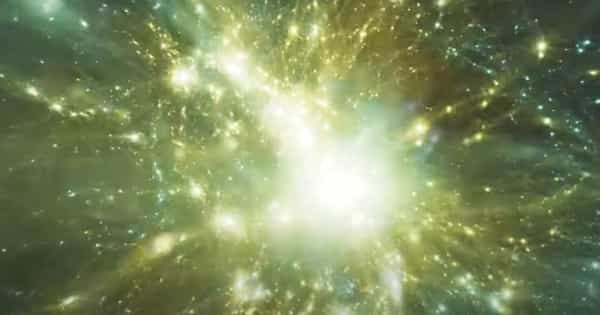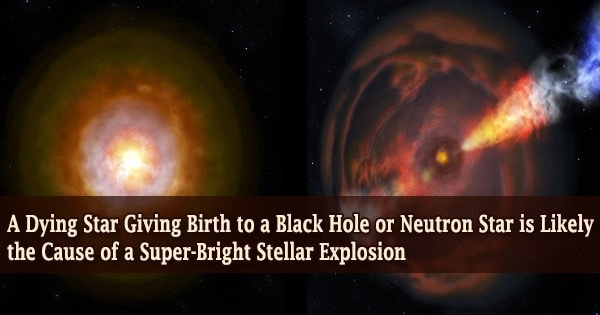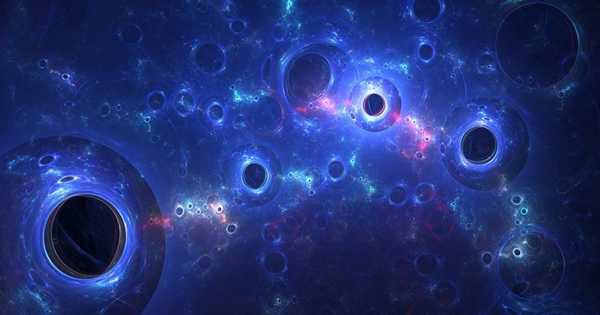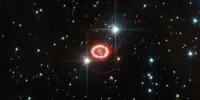Uchuu is the most expansive and detailed virtual universe ever created, and it is open to the public. Exploring the Universe by sailing between galaxies and soaring through vast regions of the Cosmos in a comfortably short period of time is a pipe dream. However, researchers have discovered a way to make this dream a reality. Anyone can swoosh through the Universe in an unprecedented virtual setting thanks to a new virtual universe.
An international team of researchers created the largest and most detailed simulation of the Universe to date, which is now freely available to everyone on the cloud. This simulation, known as Uchuu, will assist astronomers in interpreting the results of Big Data galaxy surveys. Forget about online games that promise you the opportunity to explore a “whole world.” An international team of researchers created an entire virtual UNIVERSE and made it freely available to everyone on the cloud.
Uchuu (Japanese for “Outer Space”) is the world’s largest and most realistic simulation of the Universe to date. The Uchuu simulation consists of 2.1 trillion particles in a 9.63 billion light-year-long computational cube. That is roughly three-quarters the distance between Earth and the most distant observed galaxies. Uchuu will allow us to study the evolution of the Universe at a scale and detail previously unimaginable.
Researchers developed the most detailed simulation of the Universe to date and have made it freely available on the cloud to everyone. This simulation, named Uchuu, will help astronomers to interpret results from Big Data galaxy surveys.
Uchuu focuses on the Universe’s large-scale structure: mysterious halos of dark matter that control not only the formation of galaxies but also the fate of the entire Universe. These structures range in size from the largest galaxy clusters to the smallest galaxies. Individual stars and planets have yet to be resolved, so don’t expect to encounter any alien civilizations in Uchuu. However, one area where Uchuu outperforms other virtual worlds is in the time domain; Uchuu simulates the evolution of matter over nearly the entire 13.8 billion year history of the Universe, from the Big Bang to the present. That is more than 30 times longer than the time it took for animal life to emerge from the seas on Earth.
Uchuu, which translates to “outer space” in Japanese, is the largest and most realistic simulation of the large-scale Universe ever created. This virtual universe contains 2.1 trillion particles within a framework of 9.63 billion light-years per side. Each side of this cube-shaped model spans three-quarters of the distance between Earth and the farthest galaxies.

Julia F. Ereza, a Ph.D. student at IAA-CSIC who studies the large-scale structure of the Universe with Uchuu, explains the significance of the time domain. “Uchuu is like a time machine: we can go forward, backward, and stop in time, we can ‘zoom in’ on a single galaxy or ‘zoom out’ to visualize an entire cluster, we can see what is really happening at every instant and in every place of the Universe from its earliest days to the present, making it an indispensable tool for studying the Cosmos.”
Uchuu was created by an international team of researchers from Japan, Spain, the United States, Argentina, Australia, Chile, France, and Italy using ATERUI II, the world’s most powerful astronomy supercomputer. Even with all of this power, it took a year to create Uchuu. According to Tomoaki Ishiyama, an associate professor at Chiba University who created the code used to generate Uchuu, “To create Uchuu, we used… all 40,200 processors (CPU cores) that were only available for 48 hours per month. Twenty million supercomputer hours were spent, and 3 Petabytes of data were generated, which is the equivalent of 894,784,853 pictures taken with a 12-megapixel cell phone.”
Before you get too concerned about download times, consider that the research team used high-performance computational techniques to compress the information on the formation and evolution of dark matter haloes in the Uchuu simulation into a 100-terabyte catalog. Thanks to the computational infrastructure skun6 at the Instituto de Astrofisica de Andaluca (IAA-CSIC), the RedIRIS group, and the Galician Supercomputing Center, this catalog is now available to everyone on the cloud in an easy-to-use format (CESGA). Catalogues of virtual galaxies and gravitational lensing maps will be released in the future.
Uchuu’s Big Data science products will assist astronomers in learning how to interpret Big Data galaxy surveys that will be available in the coming years from facilities such as the Subaru Telescope and the ESA Euclid space mission.
The Uchuu simulation, in addition to being a detailed cosmic simulation, can be used by researchers working on scientific data mining. As more large sky surveys and simulations are created, the data will become so large that data mining will become critical in astronomical research. Until that data is available, data miners can practice on a pocket universe.
















